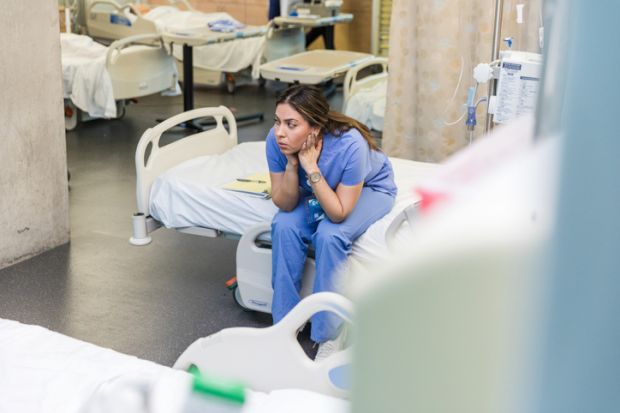New Zealand medical educators are “deeply concerned” about the new government’s plan to review selective entry programmes for Māori and islander students.
In its coalition agreement with the Association of Consumers and Taxpayers (Act), the National Party of prime minister Christopher Luxon has vowed to “examine” the University of Auckland’s Māori and Pacific Admission Scheme (Mapas) and a similar programme at the University of Otago to “determine if they are delivering desired outcomes”.
It is one of many pledges that reflect the new government’s scepticism of affirmative action schemes. National’s agreements with its junior coalition partners also include commitments to compel government agencies to prioritise their services “on the basis of need, not race”, communicate primarily in English and award government contracts “without racial discrimination”.
Meanwhile, research published in the journal BMJ Open has concluded that preferential entry schemes for medical students should be strengthened rather than wound back. The study by Auckland and Otago health academics found that Māori and Pasifika students remained under-represented in medical schools despite decades of efforts to boost their numbers.
Of the 2,858 enrolled medical students between 2016 and 2020, around 17 per cent were Māori and 7 per cent were Pasifika. While these figures are similar to Māori and Pasifika shares of New Zealand’s overall population, they are well short of parity with the youth population – particularly in the North Island, where about 40 per cent of young people are Māori or Pacific Islanders, according to lead author Warwick Bagg.
Professor Bagg, acting dean of Auckland’s medical school, said the latest workforce statistics showed that fewer than 5 per cent of New Zealand doctors were Māori and about 2 per cent were Pasifika. “We are way behind in terms of those numbers,” he said.
“The population of doctors as a whole should mirror the society that they take an oath to serve. If the government wants data, here’s the data. [Preferential entry] policies definitely help, [but] there’s more to be done. We’ve got to make up for all of the decades before. Any rollback of those policies is going to be devastating.”
Professor Bagg said a socially representative medical workforce was vital to Māori and Pasifika people, who suffered disproportionately from chronic communicable diseases, diabetes, hypertension, obesity, heart disease and cancer. The average Māori lived seven years less than the average non-Māori, he said.
The University of Otago said the long-running affirmative action programme in its health sciences division, like Mapas, was “transforming the face of the country’s medical workforce to be more reflective of the population it serves”.
Acting dean Tim Wilkinson said his school was now graduating up to 90 Māori and Pacific doctors a year compared with about 18 in 2009. “When we graduated our first large cohort from the initiative, there were fewer than 500 Māori medical doctors in all of New Zealand. We have massively lifted that number with our programme alone.”
He said qualification completion rates for Māori and Pacific medical students were over 90 per cent. Professor Bagg said Māori and Pasifika graduation rates in the Auckland programme were similar.
Simone Watkins, a paediatrician with Samoan heritage who graduated through the Mapas programme in 2011, said she had often felt “slightly misunderstood” during her medical studies. She said the social support she received, rather than the selective admission pathway, had been the most valuable aspect of the scheme.
“We were always looking to help each other out and give each other an arm up. That’s not always the case in other communities, from what I’ve seen. The challenge that we feel – or at least I feel – is always trying to stand up and say, ‘I belong here and I’m good enough to be here’. That can get quite exhausting. On top of that, you’re carrying what some of us feel is the burden of your whole community.”
Dr Watkins is now in the final year of a PhD investigating congenital heart disease among Māori and Pasifika children. She said resources should not be expended reviewing a programme that was “extremely successful” in shaping “what our health workforce might look like in the future”.
“We know that there’s this younger generation of Māori and Pasifika people in New Zealand. As they all grow up and the population balance differs and becomes more diverse, I just want to make sure that we’re going to be adequately prepared for that.”
Times Higher Education sought comment from the newly established office of the minister for tertiary education and skills, Penny Simmonds.
Register to continue
Why register?
- Registration is free and only takes a moment
- Once registered, you can read 3 articles a month
- Sign up for our newsletter
Subscribe
Or subscribe for unlimited access to:
- Unlimited access to news, views, insights & reviews
- Digital editions
- Digital access to THE’s university and college rankings analysis
Already registered or a current subscriber? Login











